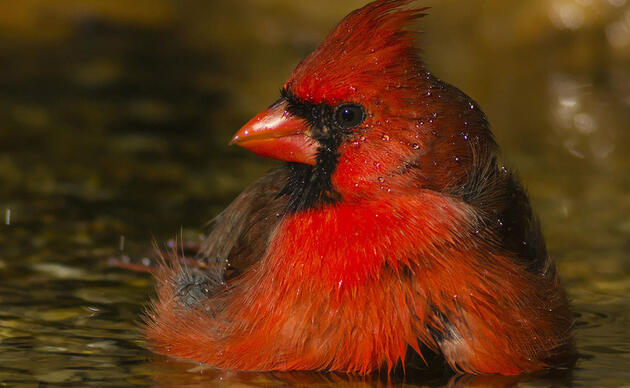The following story was excerpted from 'Corkscrew,' the annual magazine of Corkscrew Swamp Sanctuary.
Thanks to a network of motion-activated trail cameras that provide round-the-clock monitoring of panthers and other medium and large sized mammals, Corkscrew’s research team can collect data on mammal habitat use, occupancy, and images of predator-prey interactions and other behaviors. These data serve a variety of purposes, from providing information about how wildlife respond to land management activities, to documenting prey populations prior to the establishment of Burmese pythons or other injurious non-native reptiles.
While Wood Stork populations tell us about the health of our wetlands and Ghost Orchids tell us about the value of our oldgrowth bald cypress forests, Florida Panthers tell us about the value of our wetlands and uplands and the critical role Corkscrew plays in the mosaic of protected lands throughout our region. Our team is focused on modelling responsible land stewardship in our region and fostering collaborative relationships with our state and federal partners for the benefit of our native ecosystems and their wildlife. The Florida Panther is arguably one of the most captivating, yet elusive, of Corkscrew’s wildlife.
While a few visitors in recent years have been lucky enough to catch a glimpse of a panther from the boardwalk, visitor sightings of these solitary and shy large mammals are rare. Data on Corkscrew’s panthers are important, however, as large tracts of protected land like our Sanctuary provide critical habitat and travel corridors for this federally-endangered species that is highly territorial and has a particularly large home range.
While Florida Panther sightings are rare on the boardwalk, they are a fairly common sight in Corkscrew’s backcountry. Our network of trail cameras has revealed that Corkscrew provides habitat for a number of Florida panthers, including two different family groups in 2019. Images captured across space and through time often allow our team to identify individuals, mapping them as they move throughout the Sanctuary and even providing a glimpse into their diet, body condition, and production and growth of kittens.
Since the beginning of this effort our research team has consulted and collaborated with a number of partners at universities and state and federal agencies. Over the past two years, data collected at Corkscrew have provided Florida Fish and Wildlife Conservation Commission (FWC) with invaluable information about a recentlypublicized neurological disorder affecting Florida panthers and bobcats in several areas in Southwest Florida. Our team frequently communicates with FWC’s team of panther experts (wildlife biologists and veterinarians) to report sightings, share data, and facilitate on-the-ground efforts to better understand and respond to this disorder. This is all thanks in part to trail camera technology
Stay in Touch!
Show your love of birds today. Subscribe to receive email updates about Audubon's conservation work and hear about opportunities to help birds in your area or nationwide.




